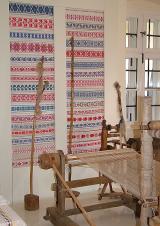2024. July 27. Saturday
Bereg Museum - Vásárosnamény
 |
Address: 4800, Vásárosnamény Szabadság tér 26.
Phone number: (45) 470-638, (45) 570-146
E-mail: beregmuz@freemail.hu
Opening hours: 01.04-31.10.: Tue-Fri 8.30-16.30, Sat-Sun 8-16
01.11-31.03.: Tue-Fri 8-16 |
